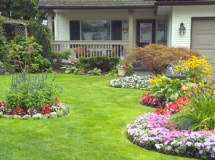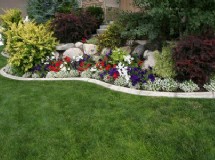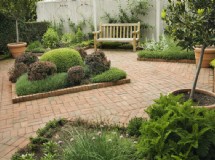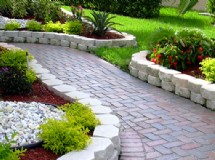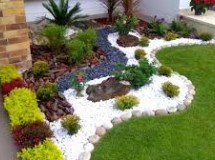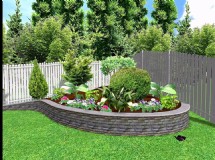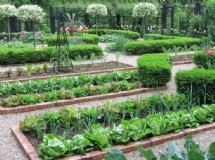- Keep the inside of your garage as tidy as the outside.fancy garage image by Aaron Kohr from Fotolia.com
Your garage provides an excellent storage space for infrequently used items or items used outdoors that get too muddy or dirty for in-home storage. Garage shelving helps keep your tools, toys and other objects organized for easy access and minimal clutter. Make full use of the available space by building shelves that reach the full height of your garage, and then keep a stepladder handy for reaching the top items. - For low-cost garage shelves that are effective but not pretty, cinder blocks are a classic. Place a single or two stacked cinder blocks at each end of where you want your shelves to stand, and then add another cinder block or pair as a support for every 4 feet of shelving. Top the cinder blocks with 1-inch thick plywood, then build up another layer of cinder blocks and wood, making sure to place the cinder blocks directly over each other, rather than on unsupported wood. These shelves are cheap and easy to build or reconfigure. However, they do not use the space economically because the width of the cinder blocks takes up potential shelf space. Also, this method should only be used on flat, level flooring, as the shelves are not as sturdy as types that attach to the walls.
- Enclose your important items in tall, wardrobe-style cabinets designed for garage or laundry room use. Available at most home improvement stores, these cabinets are designed to be rugged more so than attractive, although some models have optional door molding or diamond plate to improve the look. To create a versatile garage shelving space, place two of these cabinets approximately four feet apart. Create a frame of 2-by-4 lumber that is 4 feet long and the same depth as the cabinets, and then top it with 3/4-inch plywood sheeting. Attach this wooden shelf to the sides of the cabinets so it forms a platform between them, then add more framed shelves spanning between the cabinets until you have the amount of storage you desire. You can also leave the single shelf open as a table top and hang pegboard to the wall behind it, creating a place for hooks to store frequently used tools.
- Create space-conserving open wood shelves by framing rectangles, as noted in the previous section, with 2-by-4s, but at any length you desire and a depth of 2 feet or less. Screw these shelves into the walls at various heights, making sure you attach them to the studs. Add vertical 2-by-4 supports along the front edge every 3 to 4 feet, and one more support on each end near the front corner. Make sure you measure the height of your larger items before placing these shelves along the wall, as they will be difficult to adjust if the items don't fit. This method creates sturdy shelves that do not waste much space and are easy to access. However, it does take some carpentry skill.
Economical and Sturdy
Cabinets
Wooden Shelves
SHARE


